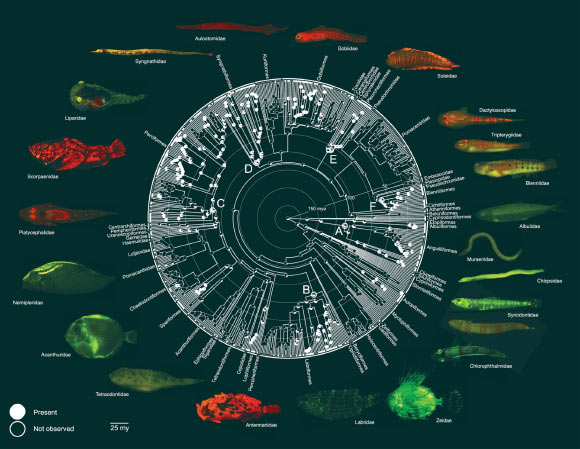Now Reading: New Studies Trace Ancient Origins of Biofluorescence in Fish
-
01
New Studies Trace Ancient Origins of Biofluorescence in Fish
New Studies Trace Ancient Origins of Biofluorescence in Fish

Fast Summary
- What is biofluorescence? Biofluorescence involves the absorption of high-energy light and its reemission at lower wavelengths, widespread among marine animals, especially fishes.
- Research findings:
– Two studies by the American Museum of natural History analyzed biofluorescent teleost fish.
– Biofluorescence dates back approximately 112 million years, first seen in eels. It has independently evolved over 100 times.
– coral reef habitats significantly accelerate the evolution of biofluorescence-species there evolve fluorescent traits about ten times faster than non-reef species.
– Of the identified 459 biofluorescent teleost species (including coral-associated ones), at least six distinct fluorescent emission patterns were observed across certain families.
- Historical context: the rise of modern coral-dominated reefs post-end-cretaceous extinction (66 million years ago) promoted diversification in reef-associated fluorescent fishes.
- Study techniques: UV light photography was used to analyze specimens collected from regions like Solomon Islands and Greenland over several years.This revealed greater diversity in their fluorescent emissions than previously known.
- Potential applications: Discoveries regarding fish fluorescence might pave the way for biomedical innovations, such as fluorescence-guided disease diagnostics.
Indian Opinion Analysis
The findings underscore not only the evolutionary link between coral ecosystems and biodiversity but also highlight an exceptional adaptation that could have practical scientific applications beyond marine biology.India’s large coastline offers opportunities for similar research on native marine biodiversity, including studying biofluorescence in tropical regions like Lakshadweep or Andaman & Nicobar Islands. Promoting such ecological investigations can foster sustainable conservation policies while further advancing India’s contribution to global scientific knowledge related to ocean systems.
Moreover,understanding how species-specific fluorescence supports survival mechanisms such as signaling or reproduction can inspire biomimetic technologies applicable across industries. As researchers continue uncovering connections between natural phenomena and society’s needs, interdisciplinary collaborations promise fruitful impacts ranging from medicine to environmental sustainability.
























